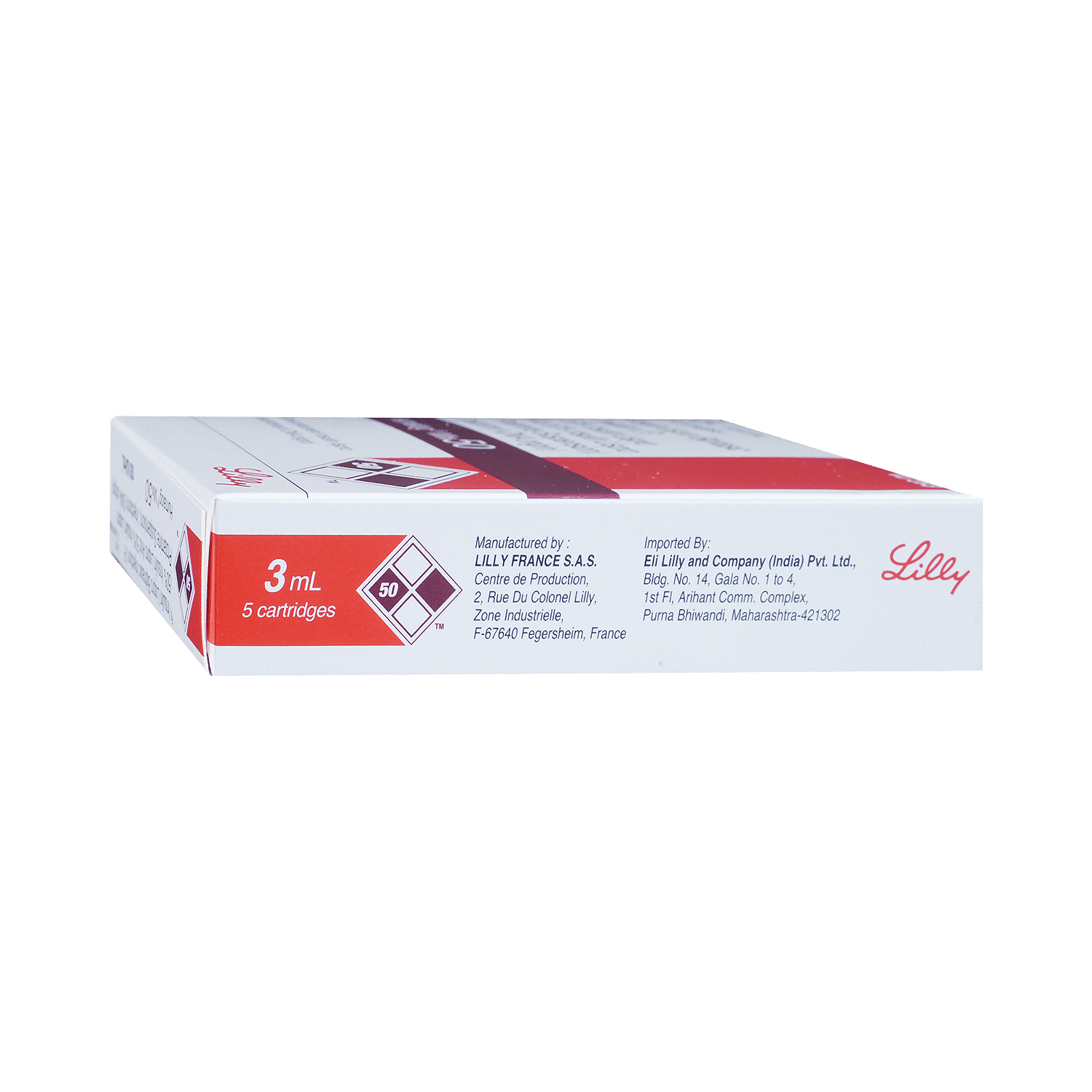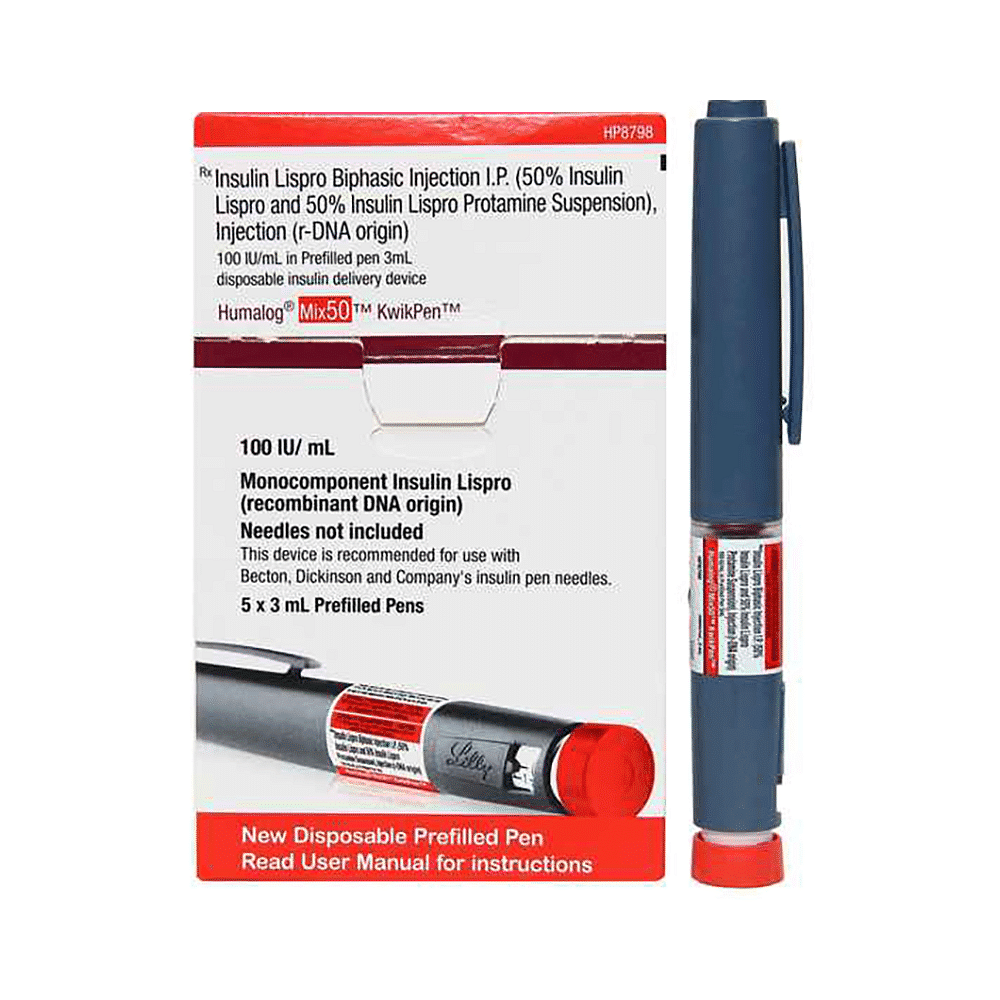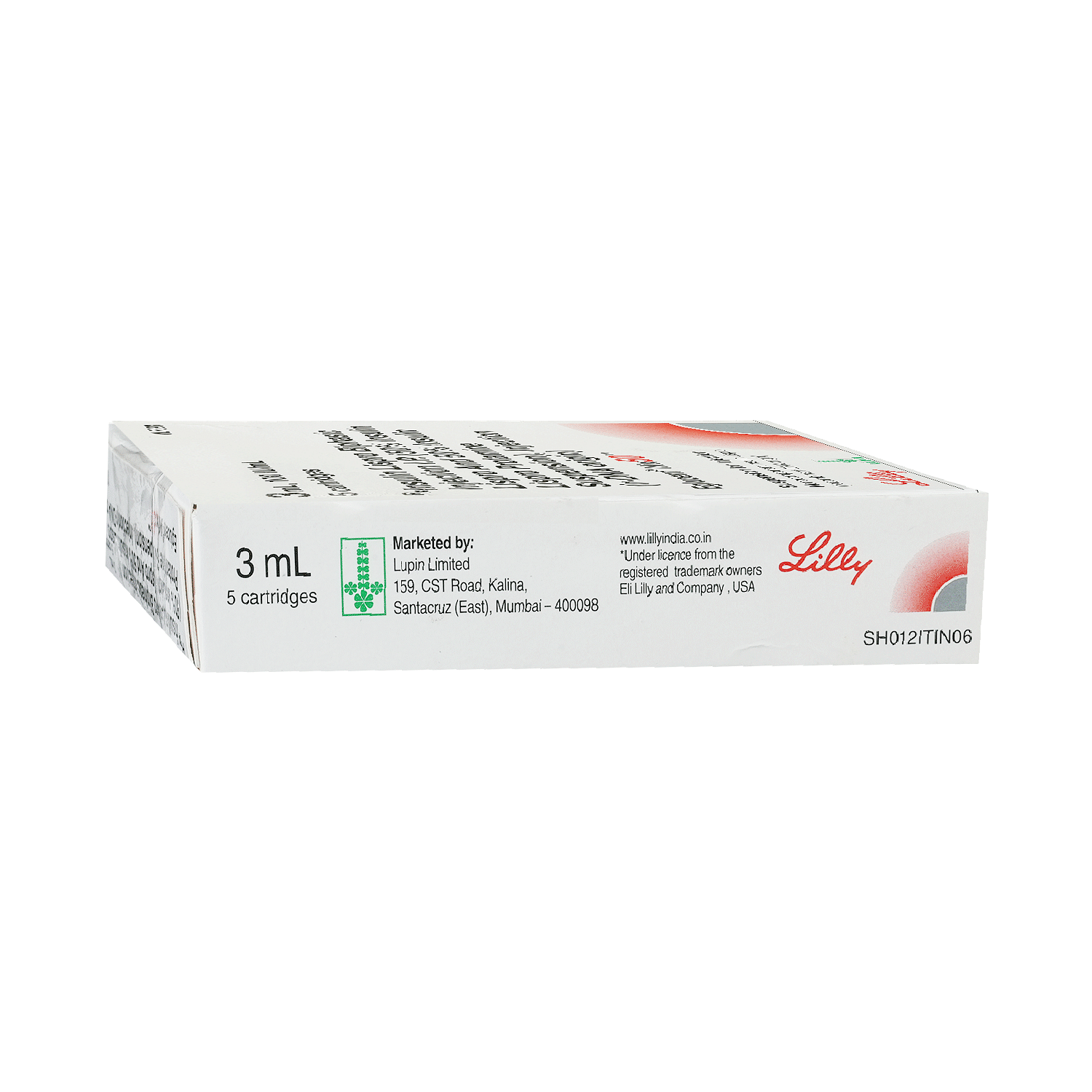

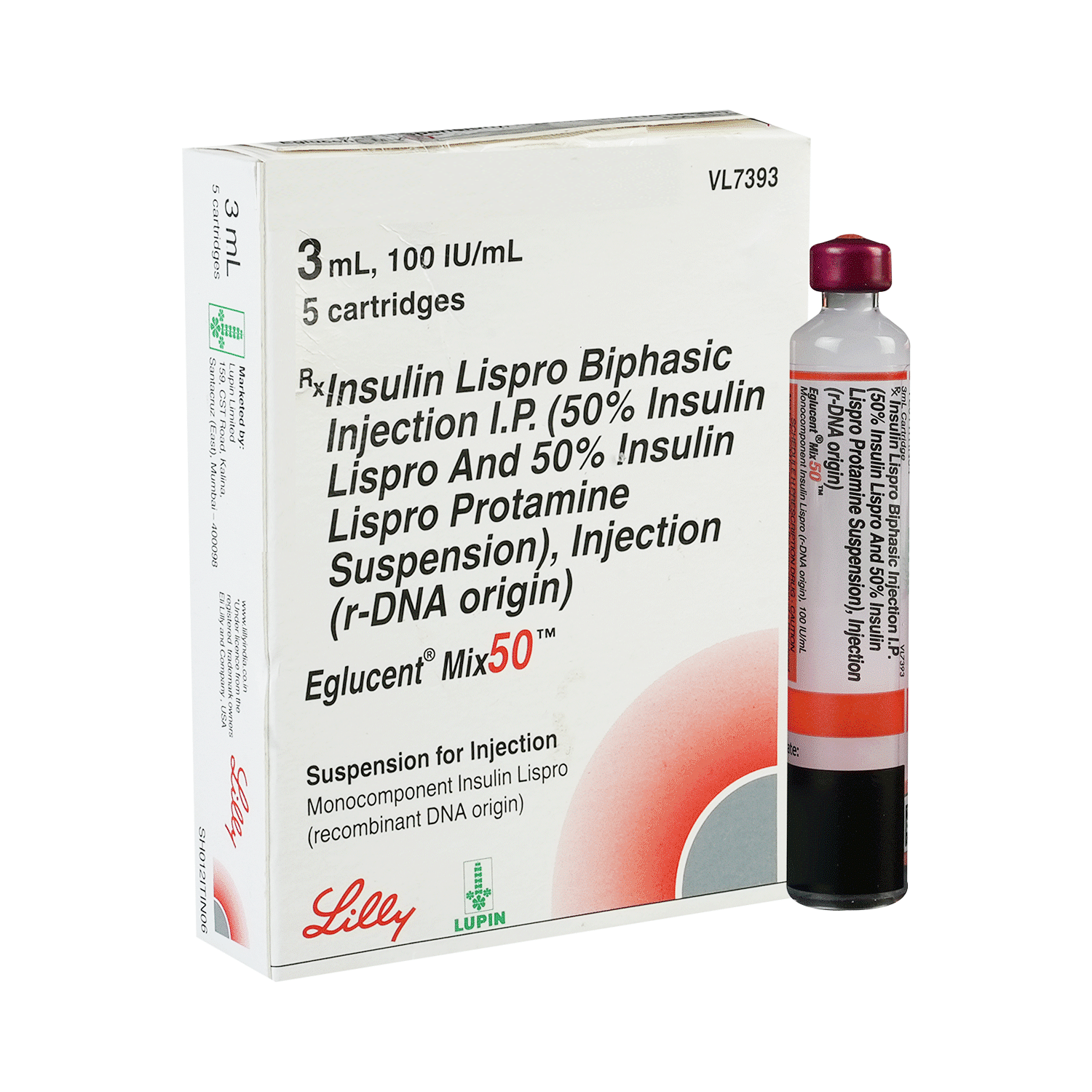


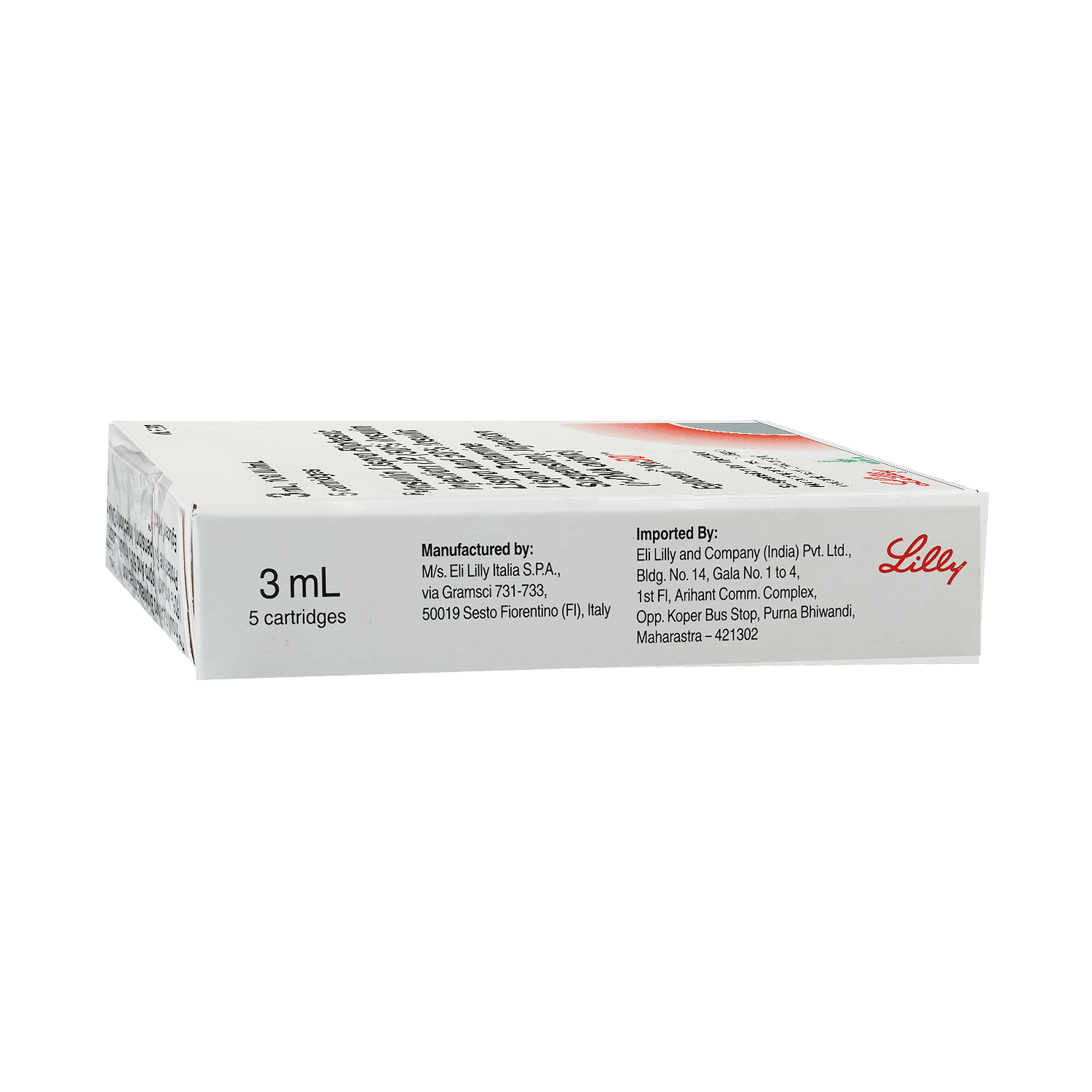
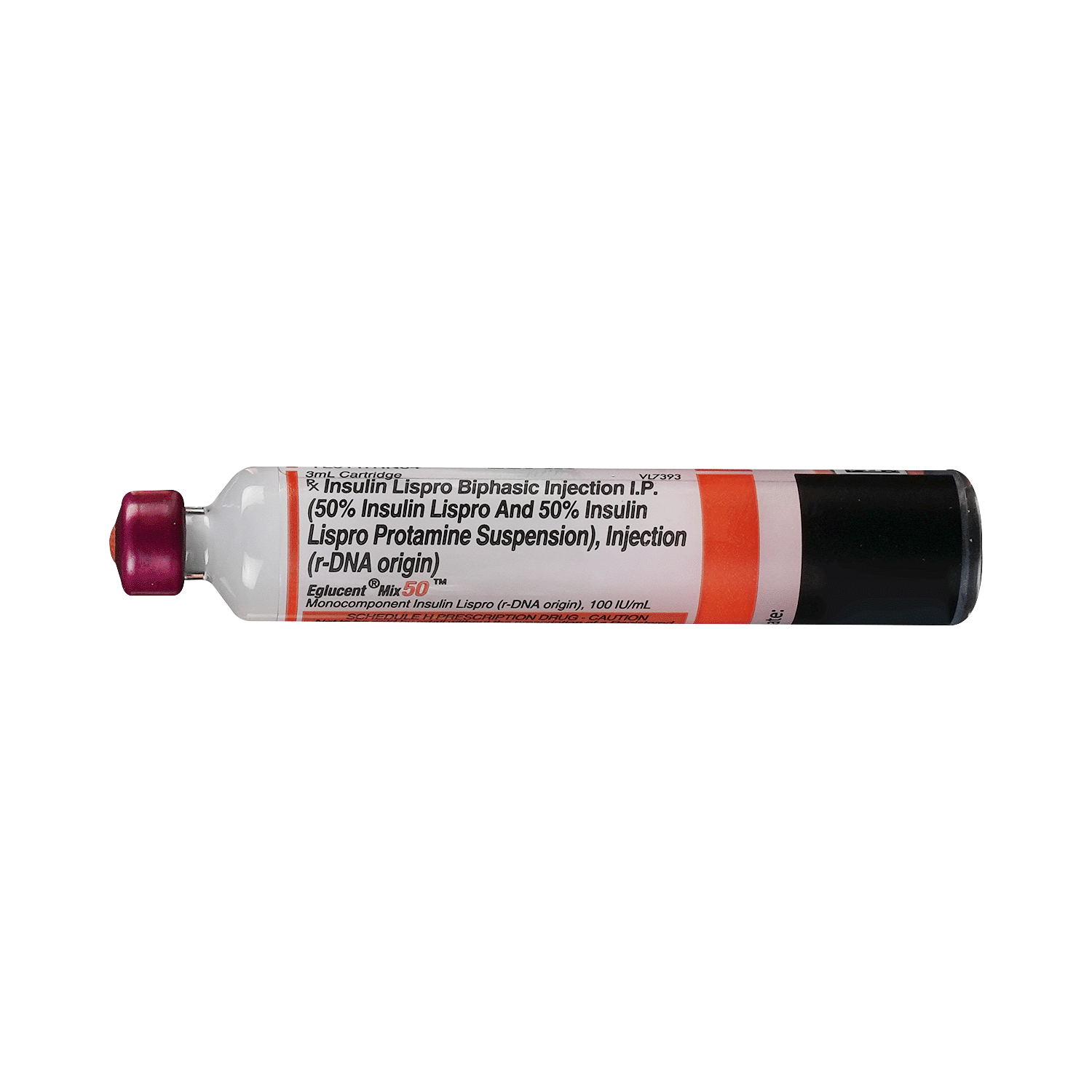


Eglucent Mix 50 Cartridge 100iu/ml
Manufacturer
Lupin Ltd
Salt Composition
Insulin Lispro (100iu)
Key Information
Short Description
Eglucent Mix 50 100IU/ml Suspension for Injection is a combination of two medicines used to improve blood sugar control in people with type 1 and type 2 diabetes mellitus.
Dosage Form
Suspension for Injection
Introduction
Eglucent Mix 50 100IU/ml Suspension for Injection is a fast-acting type of insulin that helps to lower blood sugar levels after meals and reduce the chances of developing serious complications of diabetes. It is used to improve blood sugar control in people with type 1 and type 2 diabetes mellitus. The medication should be administered under strict medical supervision, and it is important to follow the prescribed dosage and administration guidelines to avoid potential side effects and complications.
Directions for Use
Your doctor or nurse will give you this medicine. Kindly do not self administer.
How it works
Eglucent Mix 50 100IU/ml Suspension for Injection is a combination of two insulin preparations that work together to lower blood sugar levels.
Quick Tips
Take it 15 minutes before a meal or within 20 minutes after starting a meal. Injection below the skin of the abdomen results in faster absorption as compared to other injection sites such as skin of the upper arms, thighs, or buttocks. After injection, the site of injection should not be massaged. Injection sites must be rotated to prevent hard lumps from developing at one site. Change to another type or brand of insulin should be done under strict medical supervision as it may require a change in dosage. Hypoglycemia (low blood sugar level) may occur when taken along with other antidiabetic medicines, alcohol, or on delaying/skipping a meal. Carry a sugar source with you for immediate relief. Do not share your insulin device with other people, even if the needle has been changed. You may give other people a serious infection or get a serious infection from them. Opened vials/cartridges stay good at room temperature for up to 4 weeks, while unopened vials must be placed in the refrigerator (2°C–8°C).
Related Medicines
Frequently asked questions
How do I inject the dose of my insulin?
Before injecting, wash your hands thoroughly with soap and water. Choose a suitable injection site and clean the skin as instructed. Remove the outer needle cap and stabilize the skin by spreading or pinching it. Insert the needle as directed, press the knob, and then pull the needle out while applying gentle pressure to the injection site for a few seconds. Do not rub the area. Dispose of the used needle safely and rotate injection sites to avoid using the same site more frequently than once a month.
How do I prepare my Eglucent Mix 50 100IU/ml Suspension for Injection device before taking the injection?
Before use, rotate the insulin device in your palms for 10 times and invert it 180° for 10 times to resuspend the insulin until it appears uniformly cloudy or milky. If the contents are not mixed, repeat the process until the mixture is uniform. Do not shake the device vigorously, as this may cause frothing that could interfere with accurate dose measurement. Inspect the device and cartridge frequently and do not use it if clumps of material are present or if solid white particles stick to the bottom or wall of the cartridge, giving a frosted appearance.
Must I prime my pen before using it?
Yes, it is essential to prime your pen before use. Failure to prime may result in inconsistent insulin delivery. To prime, turn the dose knob to 2 units, hold the pen with the needle pointing up, and gently tap the cartridge holder to collect air bubbles at the top. Continue holding the pen upright and push the dose knob in until it stops and '0' is displayed in the dose window. Hold the dose knob in and count to 5 slowly, and you should see insulin at the tip of the needle.
What should I do if the dose knob of the pen is hard to push?
If the dose knob is difficult to push, try pushing it more slowly. If the issue persists, it may indicate a blocked needle. Replace the needle and prime the pen again.
What are the potential side effects of Eglucent Mix 50 100IU/ml Suspension for Injection?
The most common side effect is low blood sugar (hypoglycemia), which may be accompanied by symptoms such as listlessness, confusion, palpitations, headache, sweating, and vomiting. Always carry a quick source of sugar, such as glucose tablets, hard candy, or juice, to treat low blood sugar. Use of insulin is contraindicated during episodes of hypoglycemia. Other possible side effects include severe life-threatening allergic reactions and reactions at the injection site.
What should I do if I am experiencing any side effects?
If you are experiencing any side effects, please consult your doctor.
Which drugs can increase the insulin requirement of a patient?
Insulin requirements may be increased by medications with hyperglycemic activity, such as corticosteroids, isoniazid, certain lipid-lowering drugs (e.g., niacin), estrogens, oral contraceptives, phenothiazines, and thyroid replacement therapy.
Which drugs can decrease the insulin requirement of a patient?
Insulin requirements may be decreased in the presence of drugs that increase insulin sensitivity or have hypoglycemic activity, such as oral antidiabetic agents, salicylates, sulfa antibiotics, certain antidepressants (monoamine oxidase inhibitors), angiotensin-converting-enzyme inhibitors, angiotensin II receptor blocking agents, beta-adrenergic blockers, inhibitors of pancreatic function (e.g., octreotide), and alcohol. Beta-adrenergic blockers may mask the symptoms of hypoglycemia in some patients.
Is it safe to use Eglucent Mix 50 100IU/ml Suspension for Injection during pregnancy and lactation (breastfeeding)?
Data on a large number of exposed pregnancies do not indicate any adverse effect of insulin lispro (main constituent of Eglucent Mix 50 100IU/ml Suspension for Injection) on pregnancy or on the health of the fetus/newborn. Insulin requirements usually fall during the first trimester and increase during the second and third trimesters. Patients with diabetes should inform their doctor if they are pregnant or contemplating pregnancy. Careful monitoring of glucose control and general health is essential in pregnant patients with diabetes. Patients with diabetes who are breastfeeding may require adjustments in insulin dose, diet, or both.




